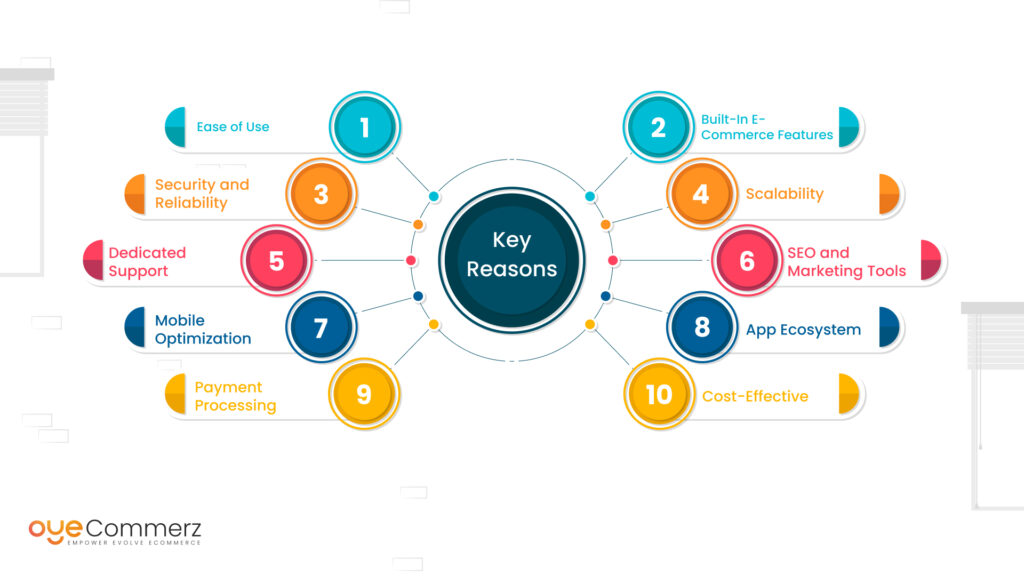Transitioning from WordPress to Shopify is an exciting step toward optimizing your online store operations. As businesses grow, choosing a platform that aligns with growth potential, user experience, and customization is essential. Shopify has emerged as a preferred choice for e-commerce professionals, offering unmatched adaptability, security, and user-friendliness. In this guide, we’ll explore why this migration is a game-changer, highlight the benefits, and share actionable steps to facilitate a seamless transition.
1. Top Reasons to Transition from WordPress to Shopify
The combination of WordPress and WooCommerce, continues to support countless online stores. However, as businesses expand, issues like plugin dependency, security vulnerabilities, and complex setups can hinder progress. Shopify, designed explicitly for digital retail, addresses these concerns with an all-in-one, intuitive platform. Statistics back this shift—Shopify powers over 4.4 million stores globally, with a reported 10% boost to sales conversion rates for many businesses after migration.
2. Shopify's Perks for Thriving Online Stores
Shopify’s robust ecosystem caters for expanding brands. Its notable features are:
- Effortless Design Flexibility: Shopify provides over 80 professionally designed themes.
- Integrated Tools: Features like Shopify Payments and built-in SEO streamline operations.
- International Expansion: Currency versatility and regional customization empower businesses to expand internationally.
Additionally, Shopify delivers an availability percentage of 99.98%, ensuring your website remains accessible.
3. Getting Ready for Your WP-to-Shopify Transition
Before migrating, evaluate your current store. Review product data, customer details, and search engine rankings. Resources such as Shopify’s Migration Kit or external tools help ease the transition. Develop a comprehensive plan, making sure all assets—item details, media files, and articles—are optimized for transfer.
4. Data Migration: A Critical Step
Data migration forms the foundation for a successful platform switch. When migrating from WP to Shopify, prioritize:
- Product Information: SKU, item summaries, and categories.
- Customer Data: Emails, order history, and custom fields.
- SEO Optimization: Retain meta tags, URLs, and redirects to avoid SEO losses.
Use apps like LitExtension to streamline data transfer while reducing mistakes.
5. Tailoring Your Shopify Store to Fit Your Brand
Post-migration, personalizing your Shopify store helps it aligns with your business identity. Utilize Shopify’s intuitive page builder to design pages effortlessly. Shopify's templates are mobile-responsive, providing a seamless UX across platforms—a critical factor, given 74% of online shopping comes from mobile users.
6. Maintaining SEO During Migration
SEO is vital for maintaining your visibility during migration. Shopify excels in SEO with clean URL structures, built-in optimization tools, and seamless blog integration. Ensure:
- Implement 301 redirects for old URLs.
- Enhance updated content with keyword-rich content.
- Leverage plugins like Plug in SEO to track analytics after the switch.
7. Essential Tests After Migrating to Shopify
Once the migration is complete, conduct thorough testing.
Review: - Website speed (Shopify delivers faster speeds compared to WP).
- Payment integration reliability and checkout processes.
- Adaptability across devices.
Testing guarantees your store delivers a seamless shopping journey from the start.
8. Case Study of a Successful Migration
An example of effective platform switching is Gymshark, a fitness apparel brand that transitioned to Shopify. Post-migration, the company saw a 60% increase in mobile sales and significantly lowered site downtime. This showcases the capabilities of Shopify in driving online business success.
9. Overcoming Common Migration Issues
Migration comes with challenges, such as information accuracy and adjusting tailored features. However, Shopify’s robust support and third-party experts simplify the process. Collaborating with qualified Shopify developers ensures a smooth transition.
10. Making the Switch: The First Step Toward Success
Migrating from WP to Shopify marks a forward-thinking decision to online retail. By addressing scalability, simplifying management, and improving buyer satisfaction, Shopify empowers businesses to succeed in competitive markets.
Final Thoughts
Switching from WordPress to Shopify offers a smart solution that can significantly boost your e-commerce success. With a well-structured strategy, the right tools, and expert support, you can achieve new success milestones. WooCommerce alternative Shopify
Excited to start the journey? Let’s discuss how our Shopify migration services can revolutionize your e-commerce platform. Get in touch today, or Shopify theme customization consider: Can your business afford to miss out on Shopify’s growth potential?
